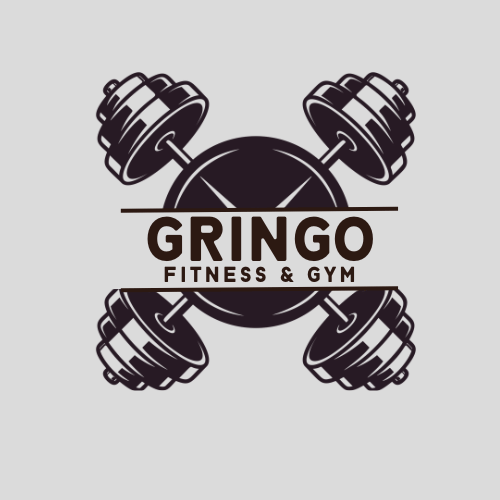There’s a moment during a tough set when your muscles swell with intensity—the burn, the tightness, the undeniable surge of energy. I’ve seen this same look of focus in countless clients over the years: the “pump” isn’t just a feeling; it’s a physiological phenomenon. As someone who’s dissected training journals and lab studies alike, I know this isn’t just about vanity. The scientific approach behind the pump ties directly to how your body builds strength and endurance. Let’s break down the facts so you can harness it for real results.
Key Takeaways
- The pump combines blood flow, cellular changes, and nervous system responses.
- Understanding its science helps optimize training and nutrition plans.
- Professional research and hands-on coaching reveal actionable strategies.
- It’s a signal of effective training when managed with proper recovery.
- Mastery of the pump’s mechanisms accelerates progress toward fitness goals.
Whether you’re lifting at home or in a gym, this article bridges the gap between the science and your workout routine. Let’s turn that fleeting sensation into a tool for lasting progress.
Understanding “The Pump” in Fitness
The term “the pump” is a cornerstone of fitness culture, but its scientific basis is often overlooked. Let’s dissect its fundamentals using the scientific approach behind THE PUMP and insights from scientific research on pumps. This phenomenon isn’t just a fleeting sensation—it’s a physiological process with measurable impacts.
Definition of “The Pump”
At its core, “the pump” refers to temporary muscle engorgement caused by increased blood flow during exercise. Technically termed exercise-induced hyperemia, this occurs when resistance training forces blood to pool in working muscles. The result? A temporary, swollen appearance linked to cellular swelling that may trigger growth signals.
Importance in Weight Training
Why does this matter? Scientific research on pumps reveals two key benefits:
- Hypertrophy cues: Blood brings nutrients and oxygen to muscles, aiding repair and growth.
- Performance feedback: The “pump” acts as real-time feedback, signaling effective muscle engagement.
Legendary trainers like Arnold Schwarzenegger emphasized the psychological boost of the pump, but modern studies validate its role in signaling long-term adaptation. However, it’s not a standalone indicator of progress. Pair it with consistency, proper nutrition, and rest for sustained gains.
| Myth | Scientific Fact |
|---|---|
| “The pump guarantees muscle growth” | A temporary sign of metabolic activity, not direct proof of hypertrophy |
| Only heavy weights induce the pump | Higher rep ranges (12-15) paired with short rest periods maximize blood retention |
| Pump = optimal workout | Requires alignment with training goals (e.g., strength vs. size) |
By understanding its science, you align your training with proven principles. Let’s dive deeper into how this ties to muscle physiology next.
The Physiology of Muscle Hypertrophy
Scientific research on pumps has clarified how muscle growth occurs through targeted stress. Let’s break down the foundational science behind how your body builds and adapts to resistance training.
Muscle Fiber Types
Every muscle contains two primary fiber types:
- Type I (slow-twitch): Endurance-focused fibers activated during long, low-intensity efforts like cycling or yoga.
- Type II (fast-twitch): Power-driven fibers used in explosive movements such as weightlifting or sprinting.
Scientific studies show Type II fibers hypertrophy faster under resistance training, which is why they’re central to “the pump” sensation.
Role of Resistance Training
Three key mechanisms drive growth:
- Mechanical tension: Heavy loads stretch muscle fibers during lifts.
- Metabolic stress: The pump’s hallmark—the burn from metabolic byproducts like lactate signaling growth.
- Damage: Microtears from intense sessions trigger repair processes.
Resistance training strategically targets these pathways. For example, high-rep sets emphasize metabolic stress (the pump), while heavy singles focus on mechanical tension.
“Hypertrophy isn’t just lifting weights—it’s a cellular conversation between stress and recovery.”
Understanding these principles lets you tailor workouts to your goals. Whether building endurance or muscle size, aligning training with fiber type and stress type maximizes results.
Vasodilation and Blood Flow Dynamics
Optimizing blood flow is critical for unlocking peak performance. Vasodilation—the widening of blood vessels—directly impacts how efficiently oxygen and nutrients reach your muscles during exercise. Recent pump technology advancements now allow trainers to measure vascular response in real time, fine-tuning workout strategies to maximize this process.
How Blood Flow Affects Performance
- Increased nutrient delivery fuels muscle contractions
- Improved waste removal reduces fatigue buildup
- Enhanced oxygen uptake boosts endurance capacity
Importance of Nitric Oxide
Nitric oxide (NO) acts as your body’s natural vasodilator. When released, it signals blood vessels to expand, creating the “pump” sensation lifters seek. New studies show NO supplements like L-arginine may amplify this effect safely.
| Factor | Impact on Vasodilation |
|---|---|
| Nutritional intake | Directly influences NO production |
| Training intensity | Triggers adaptive vascular responses |
| Recovery practices | Maintains vascular health long-term |
Pro athletes now use wearable tech incorporating pump technology advancements to track real-time vascular response. By combining smart training with science-backed strategies, we empower your body’s natural mechanisms to work smarter—not harder.
The Role of Lactic Acid
Let’s clarify a common misconception: lactic acid isn’t your enemy during workouts. Produced during intense exercise when oxygen is scarce, this compound forms through anaerobic glycolysis—your body’s quick energy backup system. While once blamed for fatigue, modern research reveals its role in signaling muscle growth and enhancing the pump sensation.
How it works: When you lift weights, your muscles rapidly convert glucose into energy, releasing hydrogen ions and lactate. This process creates the burning sensation during sets, but it’s also a metabolic trigger for hypertrophy. The accumulation of lactate doesn’t hinder performance forever—it adapts. Over time, your body improves lactate clearance, boosting endurance and recovery efficiency.
Key Benefits of Lactic Acid Accumulation
- Activates pathways that signal muscle fibers to grow
- Increases blood flow to working muscles, amplifying the pump
- Enhances metabolic stress to optimize workout adaptations
Modern Pump Engineering Techniques Using Lactate
| Method | How It Works |
|---|---|
| Drop Sets | Extend time under tension to maximize lactate buildup |
| Supersets | Combine movements to stack metabolic stress on multiple muscle groups |
| Reduced Rest Periods | Prevent lactate clearance between sets to sustain the pump |
These strategies align with modern pump engineering techniques by intentionally manipulating lactate levels. For example, using 30-second rest intervals between sets keeps lactate elevated, enhancing nutrient delivery and cellular swelling. This isn’t just theory—studies show athletes training with lactate-focused protocols see faster strength gains and improved capillary density.
Hormonal Responses and Muscle Growth
Behind every successful training session lies a complex hormonal symphony. Hormones like testosterone, growth hormone (GH), and insulin-like growth factor-1 (IGF-1) act as invisible architects of muscle development. Understanding their roles unlocks smarter training strategies to enhance your results. Let’s explore how these biochemical messengers shape your progress.
Key Hormones Involved
- Testosterone: Amplifies protein synthesis and muscle fiber repair.
- Growth hormone (GH): Boosts fat metabolism to fuel recovery and tissue repair.
- Insulin-like growth factor-1 (IGF-1): Signals cells to retain amino acids for muscle rebuilding.
- Cortisol: Managed correctly, it aids stress adaptation but can hinder gains if chronically elevated.
How Hormones Affect Recovery
Optimal recovery hinges on balancing these hormones. Overtraining disrupts this balance, slowing progress. To maximize pump performance optimization methods, prioritize:
- Rest intervals: 48-hour rest between muscle group workouts lets hormones like GH surge during sleep.
- Progressive overload: Gradually increasing weights triggers testosterone spikes without overtaxing cortisol.
- Nutrition timing: Post-workout protein intake elevates IGF-1 to repair muscle fibers efficiently.
Pairing these strategies with mindful recovery strategies turns hormonal responses into your ally for sustainable gains. Your body’s chemistry holds the blueprint for building strength—now it’s time to decode it.
Nutrition’s Impact on “The Pump”
The scientific approach behind THE PUMP emphasizes the critical role of nutrition in optimizing muscle performance. Proper fueling isn’t just about strength gains—it directly shapes your ability to achieve intense muscle fullness during workouts. Let’s break down the evidence-based strategies that bridge nutrition and physiology.
The Role of Hydration
Hydration forms the bedrock of vascular efficiency. Muscle cells are 75% water, and even 2% dehydration reduces blood volume, limiting nutrient delivery. Here’s how to apply this science:
- Drink 500ml of water 1–2 hours pre-workout to prime circulation
- Electrolytes (sodium/potassium) in fluids help retain water in muscle tissue
- Monitor urine color—pale yellow indicates proper hydration
Importance of Carbohydrates and Proteins
Carbs act as the pump’s fuel tank. Glycogen stored in muscles pulls water inward, creating that tight, full look. Pair this with proteins rich in arginine and citrulline to boost nitric oxide production:
- Consume 30–45g carbs 30–60 minutes pre-workout (e.g., bananas, oatmeal)
- Include 20–30g of whey protein post-workout to repair and retain gains
- Citrulline malate supplements (8:1 ratio) enhance vasodilation in studies
Combining these strategies aligns with the scientific approach behind THE PUMP, turning nutrition into a performance multiplier. Every bite and sip becomes part of your training protocol.
Effective Practices to Enhance Pump
Maximizing your workout pump starts with applying proven scientific research on pumps and pump performance optimization methods. Let’s break down actionable strategies to boost your training results.
Warm-Up Techniques
Begin with dynamic movements like arm circles or light band pulls to prime muscles. Research shows gradual increases in intensity improve blood flow efficiency. Try this sequence:
- 5 minutes of light cardio (walking lunges or jumping jacks)
- Muscle-specific activation drills (e.g., wrist circles for biceps)
- Two light set repetitions at 50% of your working weight
Optimal Rep Ranges
Studies confirm metabolic stress peaks between 8-15 reps. Use this table to align rep schemes with your goals:
| Rep Range | Primary Effect |
|---|---|
| 6-8 reps | Strength/hypertrophy balance |
| 10-12 reps | Optimal pump stimulus |
| 15+ reps | Endurance adaptation |
Pair this with these optimization tactics:
- Increase time under tension by slowing eccentric phases
- Implement drop sets: Reduce weight 20% after initial failure
- Use supersets/tri-sets to compound muscle engagement
Remember: Consistency with these methods builds progressive adaptations. Track your progress and adjust based on how your body responds. Your pump potential is there—now it’s time to activate it.
The Psychological Aspect of “The Pump”
Modern pump engineering techniques highlight the brain’s role in maximizing training outcomes. Your mindset isn’t just a side effect—it’s a driver of muscle engagement. Let’s explore how mental strategies turn theory into tangible results.
Mind-Muscle Connection
The mind-muscle connection bridges neural pathways and physical effort. When you consciously focus on working muscles, you activate more fibers, intensifying the pump. Research shows athletes using mental cues improve muscle activation by up to 30%. Try these methods:
- Attentional Focus Training: Direct your thoughts to the target muscle during each rep (e.g., “contract your lats during rows”).
- Visualization: Picture blood rushing into muscles before starting a set.
Boosting Motivation through Pump
The psychological reward of feeling a deep pump creates motivation. This positive feedback loop drives consistency. Here’s how to leverage it:
- Track pump intensity post-workout to measure progress.
- Use the sensation as proof your training works—this builds confidence.
Table 1: Muscle-Specific Mental Cues
| Muscle Group | Mental Cue |
|---|---|
| Chest | “Expand the pectorals outward” during presses |
| Back | “Pull with the upper back” during rows |
| Legs | “Drive through the heels” during squats |
By aligning focus with effort, modern pump engineering techniques turn workouts into mindful experiences. The synergy of mind and body isn’t just theory—it’s your tool for lasting progress.
Common Myths about “The Pump”
As a fitness professional with over a decade of experience, I’ve witnessed countless myths about “the pump” confuse even dedicated athletes. Let’s use the scientific approach behind THE PUMP to clarify what’s real and what’s fiction.
Debunking Misconceptions
- Myth 1: “The pump” directly builds muscle. Fact: While the pump signals blood flow—key to growth—it’s the consistent stress from training that drives hypertrophy.
- Myth 2: Supplements alone guarantee intense pumps. Reality: Ingredients like nitric oxide boosters can enhance vasodilation, but without resistance training, they’re ineffective. Science shows exercise remains the primary driver.
- Myth 3: Soreness equals a good pump. Truth: Muscle soreness (DOMS) relates to micro-tears, not the temporary engorgement of “the pump.” They’re separate physiological responses.
The Science vs. Street Talk
Street chatter often conflates correlation with causation. The scientific approach behind THE PUMP clarifies: supplements aren’t shortcuts, and soreness isn’t a pump metric. Training consistency and smart nutrition—like adequate protein intake—remain foundational.
Next time you hear “just take this pill for instant gains,” remember: evidence-based practices outperform shortcuts every time.
Measuring the Pump: Is it Possible?
Quantifying the sensation of muscle fullness—the pump—requires balancing cutting-edge pump technology advancements with personal feedback. Traditional methods like post-workout tape measurements track swelling but lack precision. Modern tools now offer deeper insights.
Tools and Techniques
Emerging technologies redefine how we assess the pump:
- Ultrasound Imaging: Reveals real-time muscle cross-sectional changes.
- Near-Infrared Spectroscopy: Measures blood flow and oxygenation shifts during sets.
- Bioimpedance Devices: Track fluid shifts via electrical signals in real time.
These innovations fall under pump technology advancements, offering objective data to complement classic tracking methods.
Subjective vs. Objective Measurements
| Subjective | Objective |
|---|---|
| Personal muscle “fullness” ratings | Ultrasound images of muscle size |
| Perceived energy levels | Blood flow metrics via spectroscopy |
Pairing tools like bioimpedance with workout logs creates a holistic progress picture. Researchers now combine these approaches to study muscle adaptations over weeks and months.
Remember: Numbers alone can’t capture the mind-muscle connection. Use technology to supplement—not replace—your firsthand experience. Track both data and sensations to refine your training strategy.
The Long-Term Effects of Chase for the Pump
Pursuing the pump as the sole focus can create unintended consequences. Over time, prioritizing temporary muscle engorgement over foundational strength or recovery risks undermining progress. Let’s explore how to avoid pitfalls while leveraging pump performance optimization methods for sustainable gains.
“Progress thrives when the pump is a tool, not the goal.” – Fitness Science Principles
Potential Downsides
- Ignoring progressive overload: Chasing the pump often reduces focus on lifting heavier weights, stalling strength gains.
- Risk of overtraining: Frequent high-volume sessions for maximal pump effects may delay recovery, increasing injury risks.
- Psychological dependency: Relying on the “pump high” to feel motivated can lead to frustration during off days.
Balancing Pump with Overall Fitness Goals
Effective pump performance optimization methods require integration into a holistic plan. Here’s how to align it with your journey:
- Alternate training phases: Dedicate specific sessions to pump-focused volume work, paired with dedicated strength and power cycles.
- Use the pump as feedback: Monitor how well your nutrition, rest, and technique align with your goals—not just the immediate muscle fullness.
- Track non-pump metrics: Measure strength increases, body composition changes, and recovery quality alongside pump intensity.
Remember: Optimal results come from balancing feel-good moments with long-term objectives. Your training should evolve with your body’s needs—not stay stuck chasing one sensation.
Conclusion: The Science of “The Pump”
Understanding the scientific approach behind THE PUMP reveals how physiological processes like vasodilation and nutrient intake influence muscle development. This knowledge transforms workout strategies into purposeful actions. Let’s summarize the key takeaways and explore how to apply them effectively.
Recap of Key Points
The scientific approach behind THE PUMP highlights how blood flow, hormones, and training techniques work together. Vasodilation increases nutrient delivery to muscles, while lactic acid and hormones like testosterone support growth. Proper hydration, carb intake, and structured rep ranges enhance the pump’s effectiveness. Balancing these factors ensures the pump serves your goals, not overshadows them. Science shows that consistency and adaptation are key to long-term progress.
Encouragement for Fitness Enthusiasts
Apply this knowledge by prioritizing warm-ups, tracking your body’s response to different exercises, and adjusting nutrition. Remember, THE PUMP is a tool—not the sole measure of success. Combine it with rest, recovery, and varied training to build strength and endurance. Whether lifting at-home with dumbbells or gym equipment, focus on the mind-muscle connection. Stay curious, experiment safely, and let science guide your journey. Your results will reflect the synergy of knowledge and effort.










